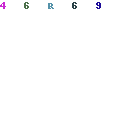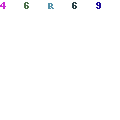Van Eck tells audience the story of Wounded Knee
A large crowd of nearly 100 students, faculty and SIUE guests was treated to a multi-media presentation on Wednesday, March 28. Lani van Eck, a cultural anthropologist who cofounded Wounded Knee: The Museum in Wall South Dakota, gave a presentation about the massacre that happened in December of 1890. Van Eck was the Wednesday night keynote speaker for the 2012 SIUE College of Arts and Sciences (CAS) Spring Colloquium.
 Larry LaFond, associate professor of English language and literature and associate dean of CAS, introduced van Eck.
Larry LaFond, associate professor of English language and literature and associate dean of CAS, introduced van Eck.
“She’s conducted research with the Lakota people on the Pine Ridge Reservation since the museum opened in 2003. Oral histories, recorded testimony, and field work on the reservation have all contributed to her unique perspective on the Wounded Knee Massacre,” said LaFond.
Van Eck began her presentation by telling the audience how the museum started.
“About 10 years ago, I met two men in Fort Collins, Colorado, and the three of us collaborated together to create Wounded Knee: The Museum out in Wall. Since that time, we have actively pursued creating understanding among all the different peoples of the world and the Museum has been a perfect vehicle for that kind of intercultural understanding,” said van Eck.
During her research and work with the Lakota peoples, van Eck has worked with a large number of the Native American tribe.
“I’ve also been fortunate enough to become good friends with the great-grandson of Sitting Bull, the legendary prophet, mystic, medicine man, leader. In fact, Ernie–his name is Ernie Lapointe–Ernie and I collaborated on book together,” said van Eck.
The book, entitled ‘Sitting Bull: His life and Legacy’ is based on oral history passed down through Sitting Bull’s descendants. The legacy of Sitting Bull was a small part of the overall picture that van Eck painted for the audience. Van Eck stated that her presentation would show the audience how the massacre came about because of the concept of cultural space and what happens when two cultures try to occupy the same space.
“I want to look at the massacre at Wounded Knee Creek in 1890 and I have several purposes that I am hoping to accomplish,” said van Eck. “What we’re going to be examining here tonight is the concept of cultural space. We know that, in physics, when two atoms try to occupy the same space, they collide and an explosion can result. So, what happens when two cultures try to occupy the same space at the same time? That’s what we’re going to be looking at here. What are the results of this? What are the ramifications of it? How does the resulting explosion radiate outward and through time?”
The second purpose of van Eck’s presentation is the same as the museum. Van Eck wants to educate as many people as possible about the story, which she views as an important piece of the history of America.
“A second purpose here is to bring to light new information about the Wounded Knee Massacre. This is a critical, important historical event that is very much ‘underknown’. Not many people are really aware of what happened there. In point of fact, most people aren’t at all aware. They have had no contact with it and there have been no information provided. History is very quiet about the massacres that occurred in this country. We try not to think about it; we try not to talk about it. Guilt is terrible way of living.”
Through a powerpoint presentation that included a large number of photos taken at the time of the massacre, van Eck shared the story of Wounded Knee with the audience.
Filed Under: Anthropology • General CAS Stories • Historical Studies












